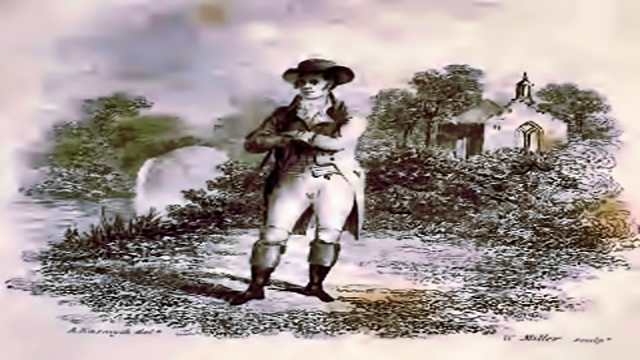Robert Burns: The Poet, His Mare, and the Haggis Legacy
When you think of Scottish poetry, one name often rises above the rest: Robert Burns. Known for his vivid imagery and heartfelt verses, Burns has become a symbol of Scottish culture and identity. But did you know that he named his mare after a legendary Edinburgh figure, Jenny Geddes? This connection to history and culture is just one of the many fascinating aspects of Burns’s life and work.
The Legacy of Jenny Geddes
Jenny Geddes was a spirited woman known for her defiance during a church service in Edinburgh, where she famously threw a stool at a minister who attempted to introduce a new prayer book. This act of rebellion made her a folk hero, and Burns honored her by naming his horse after her. In his poem “Epistle to Hugh Parker,” he referred to her as his “Pegasean Pride,” drawing a parallel between his beloved mare and the mythical Pegasus, symbolizing inspiration and creativity.
Burns’s affection for his horse reflects his deep connection to Scottish culture and the people who shaped it. He often infused his poetry with local references, making his work relatable and grounded in the realities of life in 18th-century Scotland.
A Complex Character
Initially, Burns may not have seemed appealing to everyone. Some critics, like Jeremy Paxman, labeled him the “King of Sentimental Doggerel,” focusing on his romanticized image as a free-spirited poet with a penchant for philandering—rumored to have fathered thirteen children with four different women. This perception, combined with the clichés of shortbread and tartan, led many to dismiss him.
However, as I delved deeper into his poetry, my opinion shifted. Burns was not just a sentimental figure; he was a pragmatic observer of life. He was born into poverty in Ayrshire, Scotland, in 1759, and his education was limited, primarily provided by his father. Much of his youth was spent as a farm laborer, which later inspired the romanticized notion of him as a “heaven-taught ploughman.” Yet, Burns himself was acutely aware of the fickle nature of fame. In a letter to Mrs. Dunlop dated January 15, 1787, he wrote, “When proud fortune’s ebbing tide recedes… I stood unintoxicated with the inebriating cup in my hand, looking forward with rueful resolve.”
Influences and Inspirations
One of Burns’s early influences was William Shenstone, a poet known for his exploration of nature and human emotion. Shenstone’s work resonated with Burns, who admired his ability to convey complex feelings through simple language. Interestingly, Shenstone was also the first to use the word “floccinaucinihilipilification” in writing, a term that means “the act of describing something as unimportant.” This lengthy word, often cited as one of the longest non-technical words in English, reflects the playful yet profound nature of language that Burns embraced.
The Haggis Connection
One of Burns’s most famous works is “To a Haggis,” a poem that celebrates Scotland’s beloved dish. The opening lines, “Fair fa’ your honest, sonsie face. Great chieftain o’ the puddin-race!” have become iconic, recited at Burns Night Suppers around the world. The poem humorously elevates haggis to a status worthy of praise, showcasing Burns’s ability to blend humor with reverence.
Interestingly, the first recorded recipe for haggis dates back to the early 15th century, originating not in Scotland but in Lancashire, England. The Liber Cure Cocorum, written in Middle English, presents recipes in verse form, possibly to aid memory. The haggis recipe from this text includes sheep’s heart, kidneys, and various herbs, demonstrating the dish’s long-standing place in culinary history.
The Evolution of Haggis
Haggis has a rich history that predates Burns. The Romans made similar dishes using the innards of pigs, and Homer even alludes to a dish resembling haggis in the Odyssey. The enduring popularity of haggis in Scotland can be attributed to its hearty ingredients and the cultural significance it has gained over the centuries.
At Burns Night Suppers, the haggis is often ceremoniously addressed with Burns’s poem, creating a festive atmosphere that celebrates Scottish heritage. The dish has become synonymous with Burns’s legacy, embodying the spirit of Scotland and its culinary traditions.
Conclusion: A Poet for the Ages
Robert Burns remains a towering figure in Scottish literature, celebrated for his ability to capture the essence of human experience. His connection to figures like Jenny Geddes and his playful yet profound exploration of themes like mortality and culture resonate with readers today. As we gather to honor his memory, whether through poetry or a plate of haggis, we celebrate not just a poet but a cultural icon whose legacy continues to inspire.
In the end, Burns’s life and work remind us that poetry is not merely about lofty ideals; it is about the everyday experiences that shape our identities. So, the next time you enjoy a haggis or recite a line from Burns, remember the man behind the words—a complex character who embraced life in all its messy, beautiful glory.

